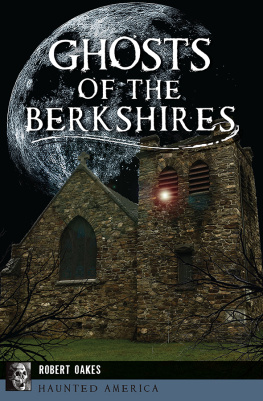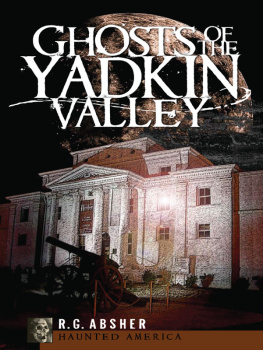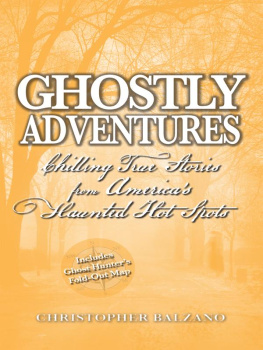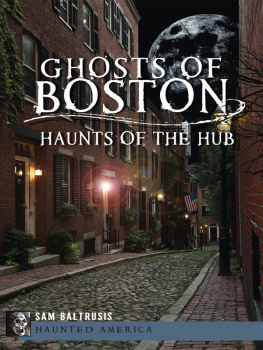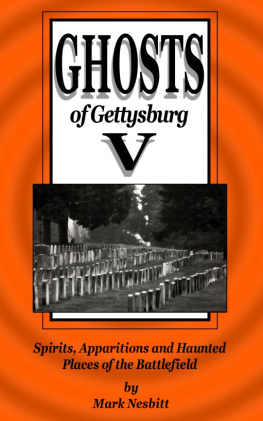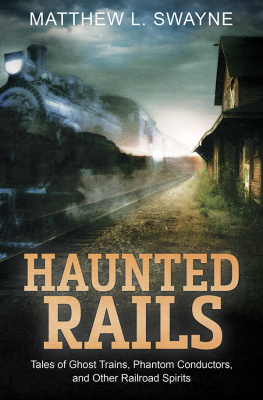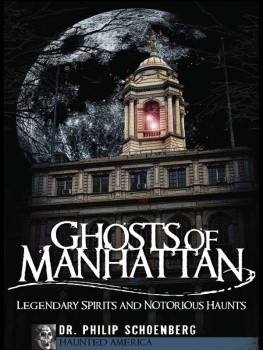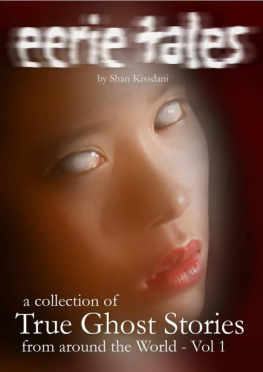
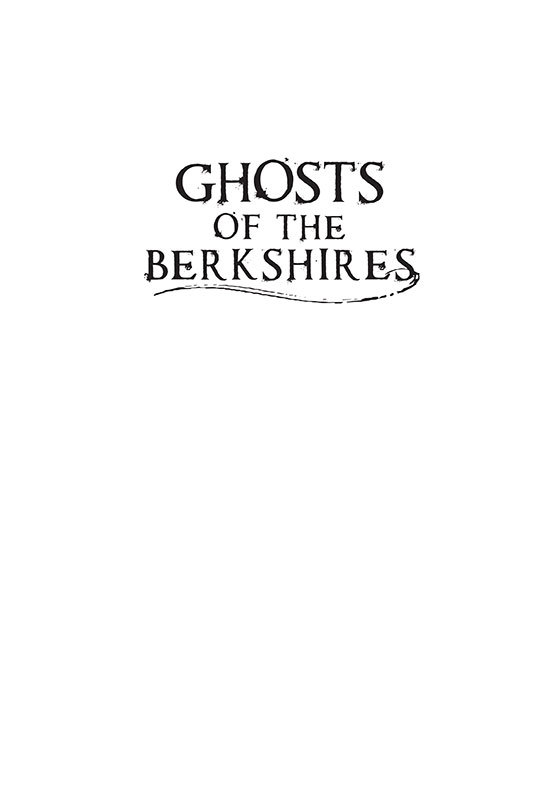

Published by Haunted America
A Division of The History Press
Charleston, SC
www.historypress.com
Copyright 2020 by Robert Oakes
All rights reserved
First published 2020
e-book edition 2020
ISBN 978.1.43967.120.7
Library of Congress Control Number: 2020938584
Print Edition ISBN 978.1.46714.279.3
Notice: The information in this book is true and complete to the best of our knowledge. It is offered without guarantee on the part of the author or The History Press. The author and The History Press disclaim all liability in connection with the use of this book.
All rights reserved. No part of this book may be reproduced or transmitted in any form whatsoever without prior written permission from the publisher except in the case of brief quotations embodied in critical articles and reviews.
CONTENTS
ACKNOWLEDGEMENTS
For your support and contributions, I want to thank: Nini Gilder; John Demos; Joe Durwin; Sam Baltrusis; Jeff Belanger; everyone at the Mount, especially Anne Schuyler, Marge Cox, Elric Walker, Patricia Pin and Susan Wissler; Will Boyce; Tim Marvin; Grace and Jason Knopp; the Lee Library; Margaret Morrissey; Sonia Morrison at the Otis Historical Commission; Barbara Greenbaum; Gabriel Kosakoff; Bernadette Horgan; Erin Asbury; Bridget Carr; Bill Cosel; Linda Rocke; Mike Kinsella; Holly Ketron; Tina Packer; Cindy Dickinson; Jessy McMahon; Ruth Burday; the Murphy family; Jeannie Maschino; Matt Tannenbaum; my professors and fellow students at Bread Loaf; Dick and Dorothy Robson; Kim Ostellino; Heather Anello; Richard Greene; Abbey Keith; Lee Mullins; the Chain Gang; T.W. Collins; Kate Barton; my students and their families; the Nickerson family; the Smith family; my family; my wife, Katherine; and the ghosts of the Berkshires.
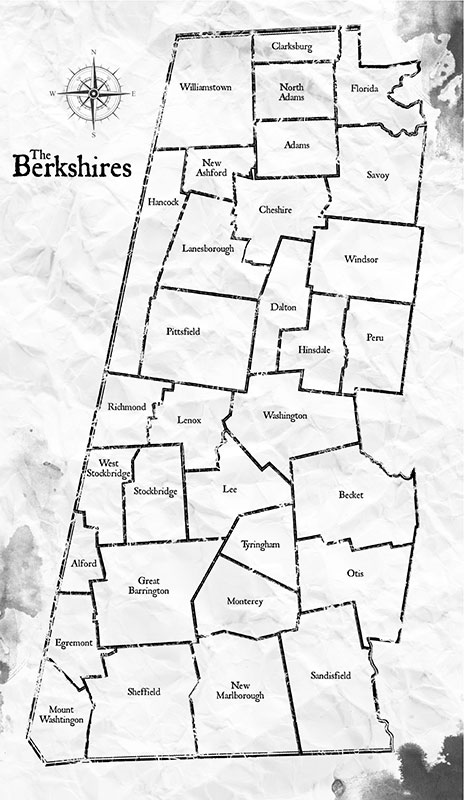
Courtesy of Robert Oakes.
INTRODUCTION
There is something lurking in the shadows of the Berkshires. Ghost seekers, for instance, often feel uneasy on the second floor of the stable at Edith Whartons the Mount. It is cluttered and dusty and smells of old wood. And on windy nights, they can hear thumps and bumps and creaking boards. Moving through this space, as their flashlights push the shadows back, they sometimes see what looks like movement in the dark beyond the beams. As a ghost tour guide, I tell groups about what others have seen here: a hanged woman, a crouching figure with piercing eyes, a disembodied head in the hallway. Together, we peer into the darkness and wonder: What are we about to see?
While researching for this book, I asked myself that question many times. And at each location I explored, I found the palpable presence of such entities, as evidenced by the sheer number of stories that have been told about them for years. The Berkshires has been a haunted region since its earliest days, when it was a rugged, sparsely populated frontier. As the Mohicans, European fur traders and early settlers walked the old-growth forests on narrow footpaths through branches and brambles, they must have felt both fear and awe. They must have sensed the spirits with them everywhere they turned. And through the years of revolutionary fervor and industrial enterprise, through the splendor of the Gilded Age and the tourism of today, sensations like these have inspired many tales of shadowy figures, voices of spirits, spectral trains and a ghostly girl in a forgotten cemetery. These haunted Berkshires lie just beneath the regions bucolic beauty, a hidden world brought to light by the storytellers who share our ghostly lore.
Since 2010, I have told tales like these at the Mount and have asked visitors to venture with me into the unknown, opening themselves up to the possibility that they, too, might encounter something strange. Whether or not we actually see or hear anything, I believe the experience is worthwhile because, whenever we reach out, with our senses open and our imagination engaged, we do make contact with the presence that so many have felt here over the years. It awakens us to the profound mysteries that lie beneath the world we know. So, journey with me through these haunted Berkshires as I share with you some of the many eerie tales I have uncovered. Lets reach out together, into the darkness, and discover what mysteries may lie beyond the beam of our flashlight.
GHOSTS IN THE HILLS
WIZARDS GLEN
While driving along Gulf Road in Dalton, passing the last of the houses near the intersection of Park and High Streets, you might find yourself drawn toward the place where the neighborhood disappears into the woods. There, the pavement ends, and the road becomes a twisted track of dirt and stone. Ominously, an orange sign beside the road warns: Use at your own risk. Passing the sign, you feel a change in the atmosphere; the air becomes cooler, and the light dims. And as you proceed, the forest entangles and surrounds you. From there, Gulf Road winds its way through the trees, threading through a towering glen of huge, tumbled stones before connecting on the other side with Route 8, near the Berkshire Mall.
More than a century ago, local residents called this glen the Gulf, and according to Joseph E.A. Smith, who wrote about the location in his 1852 book Taghconic, Or, Letters and Legends About Our Summer Home, it was considered a bucolic place to pass a merry hourin the cool depths of the ravine, perhaps while enjoying a good book or a picnic lunch. But early settlers seemed to feel a sense of dread about the place. They called it Wizards Glen, a name that reflected the commonly held belief that Native American shamans, whom they called wizards, used the location to perform rituals that were little understood and greatly feared. In his 1896 book, Myths and Legends of Our Own Land, Charles M. Skinner described the scene this way: Here, the Indian priests performed their incantations, and on the red-stained Devils Altar, it was said they offered human sacrifice to Hobomocko and his demons of the wood. The Devils Altar refers to a large flat rock that still prominently juts out from the hillside. Its red stains are now thought to be iron ore deposits in the stone, but it is easy to see why superstitious settlers would have viewed these blood-red blots as evidence of grisly human sacrifice, suspicious as they were of the native people and their ways.
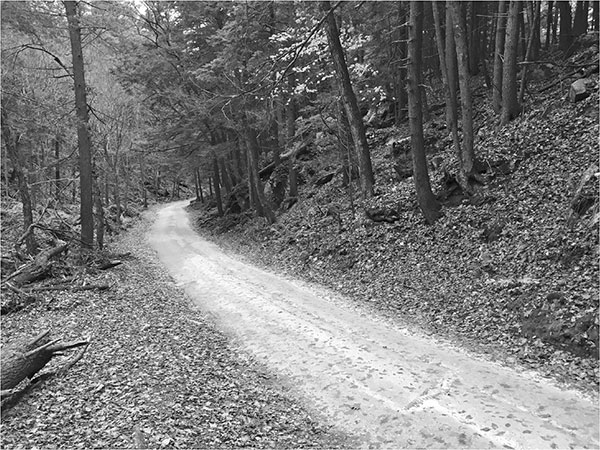
A twisted track of dirt and stone, Gulf Road winds its way through Wizards Glen. Courtesy of Robert Oakes.
This suspicion is reflected in Skinners demonic description of Hobomocko, a spirit of the underworld the Native Americans often prayed to in musical incantations at sacred sites like this. With its mass of stones, which are scattered in heaps on the steep hillside in such a way as to create numerous openings into darkness below, the Glen must have seemed an ideal place of passage into the spirit realm, or, as in the case of a priest known as Tashmu, who is mentioned in another of Skinners tales, it seemed to serve as a place of oracle, where natives could learn the divine will. But to the early settlers, who saw Hobomocko as the Devil of scripture, or the spirit of evil, the rituals conducted there could only be seen as satanic. So, it is not surprising that Wizards Glen soon became known among the local townspeople as a place to avoid. It is also not surprising that one especially eerie tale about the Glen soon took root and began to grow.
Next page
